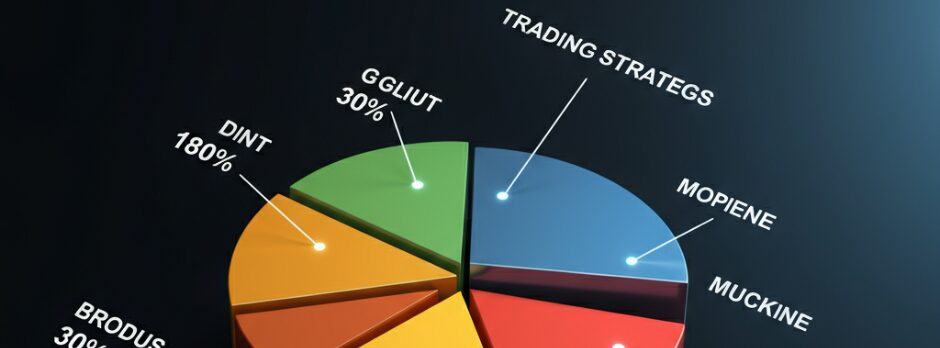
Cryptocurrency trading has evolved dramatically in recent years, propelled by innovations in blockchain technology, increased public interest, and growing institutional involvement. In an industry marked by swift fluctuations and constant change, software developers have sought new ways to bring efficiency, clarity, and innovation to trading processes. A key development is the application of artificial intelligence (AI) in market analysis, trade execution, and risk assessment. AI promises to handle vast amounts of real-time data and potentially offer insights that might elude manual analysis.
One platform that places AI technology at its core is Bitcoin Vertex, a trading ecosystem designed to simplify crypto trading by leveraging algorithms and analytics. The following review takes an in-depth look at Bitcoin Vertex, offering you the essential information you need if you are considering this platform. It explores AI fundamentals in trading, the primary components of Bitcoin Vertex’s approach, potential advantages, and the risks you should remain vigilant about. Please note that no technology can eliminate the volatility of cryptocurrencies, and individuals entering this space should be prepared for market uncertainties.

Introduction to AI in Cryptocurrency Trading
The Emergence of AI-Driven Tools
The concept of automated trading and AI-driven analytics first gained traction in traditional finance, with hedge funds and major investment firms using complex algorithms to parse large datasets. As cryptocurrencies gained popularity, developers adapted similar strategies to these highly volatile digital markets. Modern AI can perform complex calculations at lightning speed, analyzing social media sentiment, macroeconomic indicators, blockchain metrics, and more to generate trading insights.
This capacity to ingest huge amounts of data and transform it into actionable indicators can seem appealing to both seasoned traders and newcomers. Tools such as Bitcoin Vertex fit into this broader trend, offering a specialized environment that attempts to reduce the complexity of crypto trading by providing structured data analysis.
The Crypto Market Landscape
Bitcoin, introduced in 2009, spearheaded the expansion of the cryptocurrency market. Over the years, thousands of alternative coins—often referred to as altcoins—have entered the marketplace, each with unique features, use cases, and levels of community support. While the growth of this market has created new opportunities, it has also increased complexity and volatility. Consequently, many participants look for solutions that can help them navigate rapid price swings and new token launches.
Bitcoin Vertex is part of a wave of AI-driven platforms that seek to meet this demand. Though no technology offers absolute market certainty, AI-based tools can offer a structured approach in an otherwise unpredictable industry. These systems analyze historical data, track real-time fluctuations, and may adapt to new information quickly. However, adopting an AI platform for trading should include a cautious approach, given the inherent risks of investing in volatile digital assets.
Understanding the Core Technology Behind Bitcoin Vertex
Key AI Components
Bitcoin Vertex employs artificial intelligence algorithms, particularly in machine learning (ML) and data analytics, to form the backbone of its market insights. At a high level, ML models learn from historical data—price movements, trading volumes, market sentiment, and other indicators—to detect patterns that might suggest future trends. Through iterative learning, these algorithms adapt their parameters when they encounter fresh data or experience inaccuracies in prior predictions.
This process can be broken down into stages: data ingestion, feature extraction, predictive modeling, and continuous retraining. By handling these steps within one cohesive framework, platforms like Bitcoin Vertex aim to supply traders with near-real-time assessments of how the market might evolve.
Comprehensive Market Analysis
The complexity of the crypto market exceeds mere price history. Novel blockchain ventures, regulatory announcements, and widespread media coverage all influence coin valuations. An AI-driven platform typically attempts to merge these various data streams into one analysis engine. In practical terms, this might mean scanning for trending blockchain technologies, monitoring social media channels for sentiment shifts, or correlating macro events with crypto price moves.
Bitcoin Vertex is designed to integrate multiple data points to produce a more holistic understanding of market conditions. While this can help traders form structured perspectives, it also introduces potential challenges. The reliability of AI outputs depends significantly on the accuracy and scope of the data fed into the system. If any data source is compromised or inaccurate, the insights generated may become less dependable.
Adaptive Feedback Loops
One defining aspect of AI systems is their adaptive nature. In an ideal scenario, Bitcoin Vertex’s algorithms adjust to new information about market performance and refine their predictive models if the market behaves differently than expected. This means that when trades prompted by the AI results underperform, the platform can learn from those outcomes and fine-tune its approach for the next trading window.
However, it is important to set realistic expectations. Markets can experience unforeseen disruptions, such as sudden regulatory crackdowns or macroeconomic instability. These abrupt changes can defy past patterns and distort short-term predictions. While AI may improve over time, it is never immune to unpredictable events that can lead to significant market swings.
Key Features of Bitcoin Vertex
AI-Guided Insights
Central to Bitcoin Vertex’s offering is its AI-guided insights. The system collects large amounts of real-time information and processes it through analytical models designed to present traders with scenarios or signals. These signals aim to highlight possible changes in market momentum, shifts in trading volume, or emerging trends.
Although AI can offer quick evaluations, traders should remember that an algorithmic model is only as robust as the data and assumptions underpinning it. Over-reliance on any automated system without personal scrutiny can result in decisions that may not align with one’s financial goals or risk tolerance.
Streamlined User Experience
Many trading platforms struggle to balance depth of features with ease of use. Bitcoin Vertex attempts to address this by providing a clear, intuitive interface. The idea is to show traders only what they need in the moment, such as open positions, relevant market graphs, or AI indicators, rather than overwhelming them with too many metrics.
A streamlined interface can be helpful for those who find the crypto world complex. It may also save time, allowing you to concentrate on interpreting the AI’s analyses instead of wrestling with complicated dashboards. Still, new traders should seek to learn the fundamentals of crypto and trading strategies to make educated decisions rather than relying purely on a system’s suggestions.
Customizable Strategies
Though AI can offer generalized signals, there is no universal trading approach that fits everyone. Traders often vary in how they handle risk and volatility. Bitcoin Vertex addresses this by offering a certain level of customization. While the specifics can vary and evolve, these settings might involve timeframes for analysis, types of indicators considered, or the aggressiveness of the algorithm’s signals.
This customizable aspect allows traders to align the software with their own trading style, whether they are short-term momentum traders or prefer a more measured and methodical strategy. Nonetheless, it is wise to take the time to understand these customization options to avoid conflicting signals or confusion.
Security Considerations
Online platforms dedicated to crypto trading must be well-prepared to handle the risk of cyber threats. Bitcoin Vertex underscores the importance of encryption and safe data management. Still, participants in the crypto space must maintain strong personal security practices, including storing sensitive information offline whenever feasible and using unique, complex passwords.
Security extends beyond technological safeguards. It also includes personal awareness about phishing attempts, malicious links, or social engineering tactics. Regardless of how secure the platform is, user diligence is a crucial layer of protection.
Potential Benefits of Using an AI Platform
Reduced Emotional Bias
In high-volatility markets, decisions can easily be influenced by fear or excitement. AI helps to filter out some human emotions by focusing on data-driven insights. In theory, this objectivity can lead to more disciplined approaches and reduced likelihood of rash decisions that stem from panic or hype.
It’s important to clarify that using an AI platform does not erase the psychological elements of trading. You remain the final decision-maker, responsible for setting and adhering to your strategy. Nonetheless, the structured feedback AI offers might serve as a balancing force against emotional impulses.
Swift Data Processing
Crypto markets operate around the clock, and prices can shift rapidly. AI systems like Bitcoin Vertex are capable of monitoring multiple data sources in near real time, scanning for irregularities or emerging trends. For traders who have limited time to conduct their own comprehensive analyses, relying on AI can be a way to stay informed about changing conditions.
However, speed does not equal certainty. While an algorithm can detect subtle signals, it cannot perfectly predict the future. A large, unexpected event—like a government policy change—can disrupt even the best-informed strategies. Still, the rapid data processing can help you respond more quickly than purely manual methods.
Potential for Diverse Perspectives
Machine learning models are often designed to incorporate data from various domains, offering a composite view that might include technical charts, on-chain metrics, and sentiment data. This multifaceted perspective can highlight connections that might otherwise go unnoticed, such as sudden correlations between social media discussions and price movements.
Having multiple data streams integrated into one platform can be convenient, but a comprehensive approach should still involve additional research. For instance, reading reputable news or following blockchain project updates can give you further insight that supplements AI findings.
Market Volatility and the Importance of Risk Awareness
The Unpredictable Nature of Crypto
Volatility is deeply embedded in the DNA of cryptocurrency. Even well-established coins can experience significant price swings in a matter of hours. These dramatic changes can be triggered by macroeconomic announcements, protocol updates, high-profile endorsements, or broader financial market trends. While AI attempts to interpret patterns, it cannot fully account for the inherent unpredictability of a global, decentralized market.
Before engaging with Bitcoin Vertex or any similar platform, it is crucial to recognize this volatility. Gains and losses alike can occur unexpectedly, and no trading system can guarantee outcomes. Balancing enthusiasm for potential opportunity with caution is key to participating responsibly.
Practical Strategies for Risk Management
Effective risk management underpins successful trading across all markets, including crypto. The following ideas reflect general practices but are best implemented as consistent habits, rather than one-time measures:
First, set clear thresholds for how much capital you are prepared to allocate to trades influenced by AI insights. Overextending with significant sums can bring unnecessary stress. Second, develop an understanding of basic chart interpretations and fundamental analyses so you can cross-reference the AI’s signals with your own assessment. Third, track your performance diligently. Recognize patterns in your decisions that produce favorable results and those that do not align with your expectations.
Additionally, remain prepared for the market to deviate from predictions. By viewing AI suggestions as tools rather than absolutes, you create a more balanced approach. Traders should also understand that it is possible to experience downturns that require reevaluation of their strategies. When confronted with underperforming trades, see it as a learning experience for both you and the platform. Over time, you may refine your own tactics, just as the AI continues to refine its models.
Emotional Preparedness
An often-overlooked aspect of trading is emotional readiness. The crypto world’s unpredictable swings can be stressful, particularly if you are actively monitoring positions. AI insights can mitigate some guesswork, but trading remains an emotionally charged activity. If you find that fast-paced decisions cause distress, consider strategies that focus on longer-term perspectives. The synergy between your emotional comfort and your trading style often determines your capacity to remain consistent.
Best Practices for Engaging with Bitcoin Vertex
Ongoing Education
Although AI-driven platforms try to streamline the complexities of trading, ongoing education remains essential. The world of blockchain is rapidly evolving, and new coins, protocols, and decentralized applications appear regularly. Understanding the fundamentals—like consensus mechanisms, token economics, and project roadmaps—enables you to interpret AI signals in a broader context.
For instance, if Bitcoin Vertex flags a potential market movement for a token related to a new DeFi project, knowing the project’s main features can help you assess whether the signal aligns with a real and lasting trend or a fleeting hype cycle. Continual learning can include reading whitepapers, following reputable crypto analysts, or keeping tabs on relevant media channels.
Testing Before Full Engagement
Some traders jump directly into real trades with AI insights but later find that the platform behaves differently than expected. If you have limited experience with AI-based trading, a practical approach is to begin with minimal capital or a simulated environment (if available). This allows you to observe how Bitcoin Vertex interprets market signals in real-time and how you, in turn, respond to those interpretations.
Any simulation or small-scale test is only an approximation of real-world trading. Market depth, spreads, and slippage can differ when you scale up. Still, a careful testing phase can highlight whether your risk tolerance matches the types of trades suggested by the AI.
Clear Entry and Exit Plans
AI platforms often provide alerts when they detect market conditions that could be significant. However, having a structured mindset about when to enter and when to exit trades can help you avoid reactive choices. For instance, decide ahead of time whether you plan to hold a position for a specific timeframe, or until a certain technical threshold is reached.
In practice, you might set a rule that says, “I will exit if the market moves a certain percentage in the opposite direction of the signal.” Making these rules explicit keeps your decisions consistent and removes some of the ambiguity that can result from on-the-spot judgments.
Cross-Referencing External Sources
While the convenience of an all-in-one platform is attractive, it is equally important to consult independent sources. Reading established news outlets, monitoring blockchain developer updates, or exploring specialized research portals can offer deeper context for the signals you see on Bitcoin Vertex.
Cross-referencing can also help validate or question the AI’s suggestions. If multiple reputable analysts or sources also point to similar trends, you may feel more confident. Conversely, if you find conflicting information, it might be an indication to investigate further or adjust your strategy.

Ethical and Regulatory Considerations
Transparency and Fairness in AI
Machine learning models can sometimes incorporate biases present in their training data. Ensuring the AI’s fairness and transparency is an ongoing topic of debate within the field. While Bitcoin Vertex aims to provide impartial analysis, it is good practice for users to remain aware of possible systemic biases. An algorithm might favor large-cap cryptocurrencies, for instance, if it sees greater liquidity, potentially overshadowing smaller but promising tokens.
As a user, retaining a critical eye toward AI outputs can empower you to make more balanced decisions. Investigating how the platform sources data or processes that data can clarify any uncertainties you have about the underlying logic.
Global Regulatory Shifts
Governments worldwide are grappling with how to classify, regulate, or tax digital assets. Policy changes can lead to sudden market volatility. While an AI platform may account for general sentiment shifts, it cannot always anticipate the timing or scope of new regulations. Major announcements can promptly influence coin prices and trading volumes.
Staying updated on the legal framework in your jurisdiction is vital if you choose to trade cryptocurrencies. It is not just about staying on the right side of the law; regulatory changes can profoundly affect your portfolio. Bitcoin Vertex may alert you to price changes, but recognizing the legal atmosphere in your region is equally crucial.
Overcoming the Barrier to Entry
AI-driven trading platforms simplify the interface and data analysis, which can lower the barrier to entry for newcomers. This democratization has pros and cons. On one hand, individuals who might be daunted by technical charts find a more approachable format. On the other hand, novices can be tempted to jump into trading too quickly, guided primarily by algorithmic suggestions.
Striking a balance between accessibility and responsibility is key. Even if the platform makes trading more intuitive, consider your financial goals, your risk tolerance, and the broader market conditions. Rushing in without thorough reflection can lead to hasty decisions with significant consequences.
Conclusion
Bitcoin Vertex enters the crypto scene with an AI-centric promise: to provide structured, data-driven insights that can help users navigate one of the most volatile and fast-moving markets in modern finance. By integrating machine learning, real-time data analysis, and a user-friendly interface, the platform aims to reduce complexity for both experienced traders and those exploring crypto for the first time.
While there is no denying the appeal of AI-based trading assistance, it is also essential to acknowledge the limitations and risks. Cryptocurrencies continue to exhibit sharp price fluctuations, spurred by news, technological advancements, and global economic events. Even sophisticated algorithms can fail to anticipate black swan events or abrupt market reversals. Furthermore, the emotional component of trading—particularly in a market as volatile as crypto—cannot be fully mitigated by AI.
Whether Bitcoin Vertex becomes a reliable part of your trading toolkit will depend on your comfort level with AI signals, your appetite for risk, and the amount of additional research you are willing to do. Any decision should be guided by an overarching strategy that accounts for your financial position, the evolving regulatory landscape, and your readiness to adapt to new information. AI can serve as a powerful complement to a well-conceived plan, but it should not be seen as a shortcut or guarantee of favorable outcomes.
Frequently Asked Questions (FAQ)
- What is the main purpose of Bitcoin Vertex?
Bitcoin Vertex serves as an AI-enhanced trading platform tailored for cryptocurrencies. It aggregates a range of data—such as price, volume, and potential market trends—to generate structured insights that can guide trading decisions. The platform aims to simplify the often complex world of crypto analysis by using advanced algorithms. - Does Bitcoin Vertex eliminate the risks of crypto trading?
No platform can fully eliminate the inherent risks in crypto trading, which is known for its significant volatility. Bitcoin Vertex uses artificial intelligence to inform decisions, but unforeseen events can still disrupt the market. Traders must remain aware that investing in cryptocurrencies can lead to both gains and losses. - Do I need prior experience to use Bitcoin Vertex effectively?
The user-friendly interface is designed to make trading more approachable. However, some foundational understanding of how digital assets and blockchain technology work is still advisable. Basic knowledge of market mechanics, risk management, and trading strategies can help you interpret AI signals more effectively. - How does Bitcoin Vertex stay updated with changing market conditions?
Bitcoin Vertex employs machine learning techniques, which allow its models to adapt over time as they receive new data. This includes continuous evaluation of how accurate or inaccurate prior signals were. If the platform detects systematic errors, the AI model parameters may be revised to align with evolving market behaviors. - Is the AI analysis from Bitcoin Vertex always correct?
No. While the AI can process large datasets rapidly and identify patterns, it cannot guarantee accurate predictions under all circumstances. Black swan events, abrupt regulatory changes, and other unpredictable factors can drive market movements that exceed the scope of historical data. Always combine AI insights with additional research and prudential decision-making.

